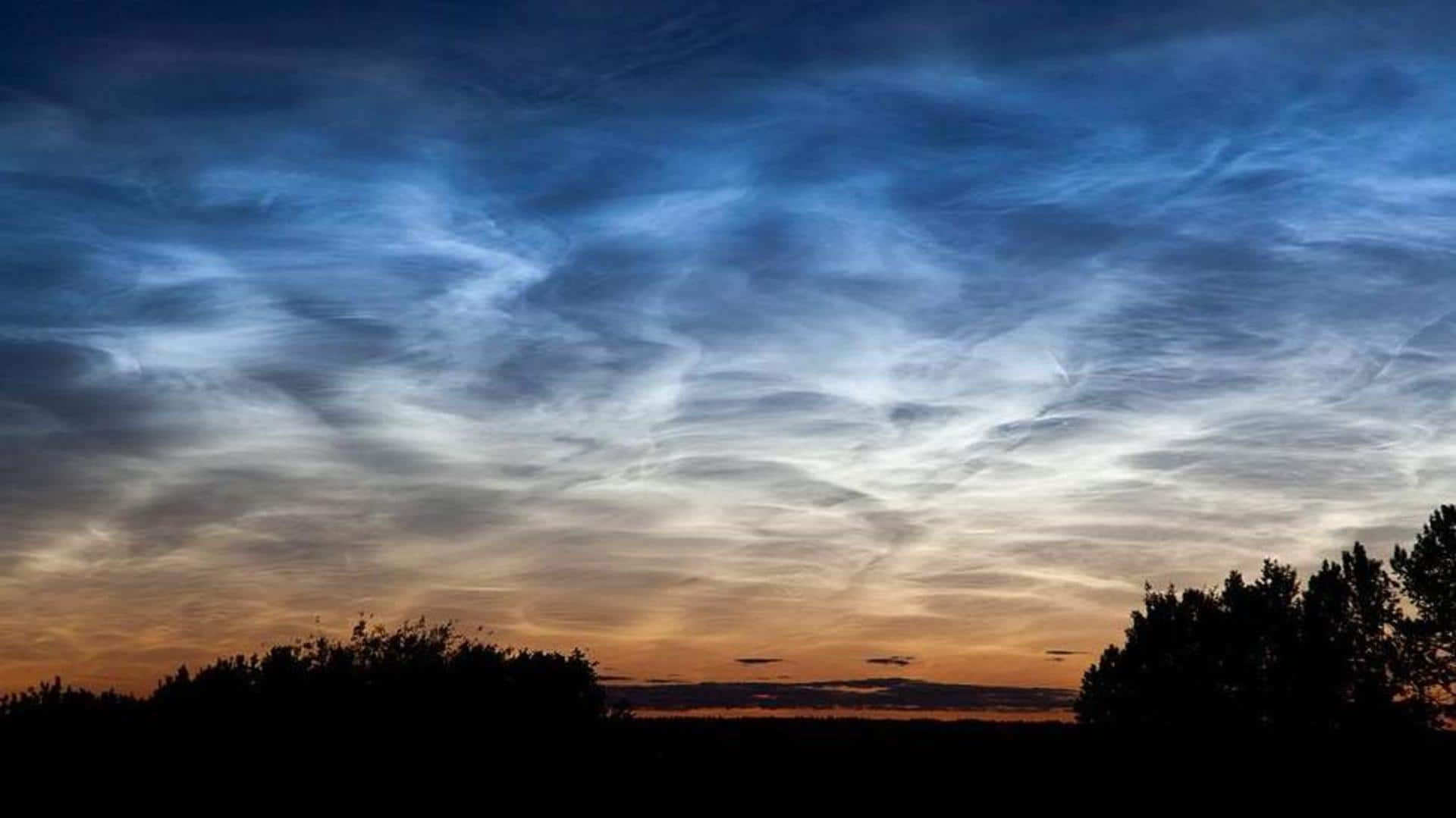
Earth's rarest clouds are back: How and when to watch
What's the story
This month and in the ones to follow, shortly after sunset, people in the Northern Hemisphere will have the opportunity to see the rarest, coldest, driest, and highest clouds in the northern skies. Known as the noctilucent clouds (NLCs) or "night-shining" in Latin, they form haphazard patterns and streak the skies in shades of deep blue, silver, or golden.
Noctilucent clouds
NLCs form at 76 to 85 kilometers above Earth's surface
According to NASA, NLCs form at high altitudes, about 76 to 85 kilometers above the Earth's surface, close to the top of the mesosphere—a layer of the Earth's atmosphere lying between the stratosphere and the thermosphere. Also called "polar mesospheric clouds," NLCs are seen right below the invisible region where Earth's atmosphere ends and outer space starts.
Formation
How do the NLCs form?
At high altitudes, where the temperatures are low, the NLCs take shape when water vapor freezes into ice crystals that stick to dust particles left behind by meteors. This makes NLCs the highest, driest, and coldest clouds seen from Earth. Noctilucent clouds often bear a wavy pattern because of the strong winds blowing at those high altitudes.
Information
NLCs have been increasingly spotted in recent years
Up until 1885, there were no observations of NLCs, per National Oceanic and Atmospheric Administration (NOAA). NLCs have been more frequently noticed in recent years and are considered "harbingers of climate change" because of the increased amount of atmospheric methane.
Viewing
Peak season for NLCs is around late June till July-end
The best time to see NLCs from the northern hemisphere is around the summer solstice in late June till the end of July, when they are easily observable from about 50 to 70 degrees north latitude, according to Windy. People in the colder, northern regions like Denmark may have already observed NLCs from the start of June, per reports from spaceweather.com and earthsky.org.
Instructions
How to watch the NLCs?
NLCs can be seen an hour or two after sunset and before sunrise as well. These clouds are best observed with the naked eye but binoculars could improve your viewing experience. In the evenings, look out for clouds that glow after other clouds have darkened. Noctilucent clouds appear wispy and in electric blue shades across the northern skies. Happy skywatching!